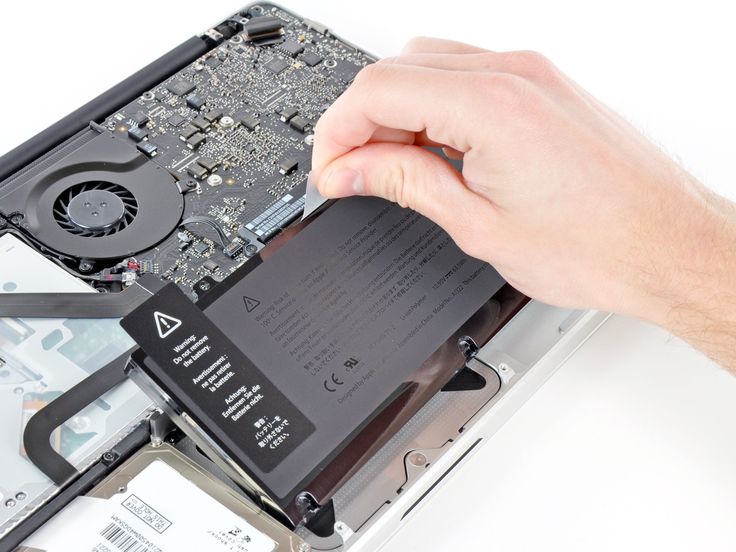MacBook Repair: Everything You Need to Know About Fixing Your Device
MacBooks are known for their premium design, smooth performance, and long lifespan. However, like all technology, they can run into problems over time. Whether it’s a cracked screen, a failing battery, or software issues, the need for reliable MacBook repair services is inevitable for many users. This comprehensive guide will take you through everything you need to know about MacBook repair, from common issues and how to troubleshoot them, to selecting the right service provider and tips for maintaining your MacBook after repair.

Common MacBook Problems
Over time,Macbook Repair your may encounter various issues. While some of these problems are minor and can be fixed at home, others may require professional intervention. Here’s a breakdown of some common MacBook problems:
1. Screen Damage
Whether it’s from an accidental drop or an impact, a cracked screen can make your device difficult or impossible to use. Even if the crack is minor, it’s best to get it repaired quickly before it worsens. In addition to cracks, users may experience issues like flickering screens or dead pixels, both of which usually require a professional diagnosis and repair.
2. Battery Problems
MacBook batteries, like all lithium-ion batteries, degrade over time. You might start noticing that your device doesn’t hold a charge as long as it used to or that it shuts off unexpectedly. In some cases, you might find the battery swelling, which is a serious issue that needs immediate attention. While Apple claims its batteries last for around 1,000 charge cycles, many users experience problems much sooner, making battery replacement one of the most common MacBook repairs.
3. Keyboard Issues
MacBook keyboards, particularly the butterfly keyboard found in models from 2015 to 2019, have been known for their reliability issues. Problems range from sticky or unresponsive keys to keys that double-type. Apple has acknowledged these issues and even offers free repairs for certain models, but for those out of warranty, professional keyboard replacement may be necessary.
4. Water Damage
Spilling liquids on a MacBook is a nightmare for most users. Even a small amount of water can damage the motherboard, hard drive, or other components, often rendering the device useless. If your Macbook Repair suffers water damage, immediate action is essential. Power off the device, disconnect it from the charger, and seek professional help as soon as possible.
5. Overheating and Fan Noise
Overheating is another issue some Macbook Repair users face. Excessive heat can damage internal components and lead to performance issues. You may also notice loud fan noise when the device is under heavy use. Overheating can result from blocked vents, software issues, or a failing cooling system, and may require a cleaning or fan replacement by a technician.
6. Software Glitches
Though MacBooks are known for their seamless software experience, they aren’t immune to occasional glitches. You may experience random crashes, freezing, or compatibility issues with certain apps. In most cases, these issues can be fixed with a software update or a fresh installation of macOS. However, persistent software problems may indicate a hardware issue.
7. Hard Drive or SSD Failure
Over time, hard drives or solid-state drives (SSDs) can fail, leading to data loss and boot problems. If your MacBook struggles to start, runs slower than usual, or frequently crashes, it could be a sign of drive failure. Replacing the drive with a new SSD can drastically improve performance and restore functionality to your MacBook.

DIY MacBook Repair: Pros and Cons
With a plethora of online guides and videos, many users are tempted to try repairing their MacBook themselves. Here are some pros and cons of attempting to repair your MacBook on your own:
Pros:
- Cost-Effective: DIY repairs can save money, especially if you already have the necessary tools.
- Learning Experience: For tech enthusiasts, repairing your own MacBook can be an educational and rewarding experience.
- Immediate Action: You don’t need to wait for an appointment at a repair center or deal with shipping delays.
Cons:
- Risk of Further Damage: Without the right tools or knowledge, you might cause more damage to your MacBook, leading to higher repair costs in the long run.
- Voiding Warranty: Opening your MacBook or using non-Apple parts can void your warranty or AppleCare coverage.
- Complex Repairs: MacBook components are tightly packed and require specialized tools. Even simple repairs can become complicated without professional training.
Professional MacBook Repair: What to Look For
When your MacBook needs repair, it’s important to choose a service provider carefully. Here’s what you should consider when selecting a MacBook repair service:
1. Certification
The best way to ensure your MacBook is in capable hands is to choose a service provider with Apple certification. Apple Authorized Service Providers (AASPs) are trained to repair Apple products using genuine parts, ensuring the highest quality service. Non-certified repair shops may not have access to Apple’s diagnostic tools or replacement parts, and they might not offer the same level of expertise.
2. Reputation and Reviews
Sites like Google, Yelp, and Trustpilot can give you insight into other customers’ experiences. Look for consistent praise in areas like professionalism, quality of service, and turnaround time.
3. Turnaround Time
Some repairs, like screen or battery replacements, can be completed within a few hours. Others, like logic board repairs, might take days or even weeks, depending on the severity of the issue and the availability of parts. Be sure to ask the service provider about the estimated repair time before you commit.
4. Warranty on Repairs
Reputable repair services offer a warranty on their work, typically ranging from 90 days to one year. This warranty ensures that if the issue reoccurs or something goes wrong after the repair, the service provider will fix it without additional cost. Always inquire about the warranty before agreeing to a repair.
5. Cost Transparency
MacBook repairs can be expensive, so it’s important to get a clear estimate upfront. Reputable repair centers will provide an itemized quote and be transparent about any additional costs that may arise during the repair process. Avoid service providers that are vague about their pricing.
The Cost of MacBook Repairs
Here are some common repairs and their typical price ranges:
- Screen Replacement: Rs300–600Rs
- Battery Replacement: Rs100–200Rs
- Keyboard Replacement: Rs150–350Rs
- Logic Board Repair/Replacement: Rs400–800Rs
- SSD Replacement: Rs200–500Rs
While Apple-authorized repairs tend to be more expensive, they come with the assurance of using genuine parts and retaining your warranty. Independent repair shops may offer lower prices but may not use original parts, which could affect the performance and longevity of the repair.

How to Prevent Future MacBook Issues
While no MacBook is immune to problems, there are steps you can take to prolong the life of your device and prevent the need for frequent repairs:
1. Regular Software Updates
Software updates often include security patches, bug fixes, and performance improvements that can prevent issues from arising.
2. Backup Your Data
Always keep your important data backed up using Time Machine or a cloud-based service like iCloud. This ensures that if your MacBook experiences a major issue, you won’t lose valuable files.
3. Use a Protective Case
A good-quality case can protect your MacBook from accidental drops, bumps, and spills. Consider investing in a hard shell case, keyboard cover, and screen protector to prevent damage.
4. Avoid Overheating
Ensure your MacBook has adequate ventilation by keeping the vents free of dust and debris. Avoid using it on soft surfaces like beds or couches, which can block airflow and cause overheating.
5. Handle With Care
Use a padded bag to protect it during travel, and avoid placing heavy objects on top of the device.
Here are some frequently asked questions (FAQs) related to MacBook repair:
1. What are the most frequent hardware problems MacBook users encounter that lead to service requests?
- Common issues include screen cracks, battery problems, keyboard malfunctions, overheating, water damage, and hard drive or SSD failures.
2. What is the typical price range for replacing a damaged MacBook display?
- The cost of a screen replacement typically ranges from $300 to $600, depending on the model and whether you choose an Apple-authorized center or a third-party service.
3. Can I replace my MacBook battery myself?
- While it’s technically possible, MacBook batteries are difficult to access without the proper tools, and DIY replacements can void warranties.
4. How long does a MacBook repair take?
- Simple repairs like battery or screen replacements can take a few hours, while more complex repairs, such as logic board fixes, may take several days.
5. Are MacBook repairs covered under warranty?
- AppleCare and warranties typically cover repairs related to manufacturing defects, but accidental damage, such as water spills or drops, is not covered unless you have AppleCare+.

6. Is it safe to use third-party repair services for MacBook repairs?
- While some third-party repair services are reliable and more affordable, using non-authorized service centers may void your warranty and result in the use of non-genuine parts.
7. Is it possible to fix a MacBook that has been damaged by liquid exposure?
- It’s important to get professional help immediately to prevent corrosion and long-term damage.
8. Do MacBook repairs come with a warranty?
- Apple-authorized repair centers usually provide a 90-day to one-year warranty on repairs. Be sure to ask your service provider for their warranty policy before proceeding with the repair.
9. How do I back up my data before a MacBook repair?
- You can use Apple’s Time Machine to back up your data to an external drive, or cloud-based services like iCloud or Google Drive to ensure your files are safe before repair.
10. Should I repair or replace my old MacBook?
For older models, especially those no longer receiving updates, it may be more cost-effective to replace rather than repair.
Conclusion
MacBook repair is a vital service for many users who rely on their device for work, school, or personal use. Whether you’re dealing with a cracked screen, a failing battery, or a more serious hardware issue, finding the right repair solution is crucial. While DIY repairs can save money, they come with risks, so it’s often best to leave complex repairs to the professionals.
When selecting a repair service, prioritize Apple-certified providers, transparent pricing, and a warranty on repairs to ensure your MacBook receives the best care. By maintaining your MacBook properly, you can extend its lifespan and minimize the need for future repairs, saving you both time and money in the long run.


